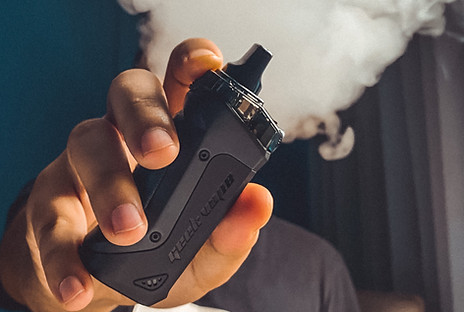
ALASKA

TOBACCO HARM REDUCTION 101: ALASKA
January 16, 2020
Key Points:
-
Alaska’s vaping industry provided more than $40 million in economic activity in 2018 while generating 196 direct vaping-related jobs.
-
As of December 3, 2019, ADHSS has reported one case of vaping-related lung illness, with the patient reporting use of a THC-containing vapor product. ADHSS earns an A for its reporting on vaping-related lung illnesses.
-
In 2017, 15.7 percent of Alaska high school students reported using vapor products on at least one day in the previous 30 days. There is no information on frequent and/or daily use. More data is needed.
-
Only 1 percent of FDA retail compliance checks in Alaska resulted in sales of e-cigarettes to minors from January 1, 2018 to September 30, 2019.
-
Alaska spends very little on tobacco prevention. In 2019, Alaska dedicated only $9.1 million or 10 percent of what the state received in tobacco settlement payments and taxes.
WHOLESALE E-CIGARETTE TAX WOULD VAPORIZE HARM REDUCTION IN ALASKA
May 19, 2019
-
House Bill 94 would impose a 75 percent wholesale tax on e-cigarettes and other, similar tobacco harm reduction products.
-
Although many lawmakers in other states have recently considered creating additional taxes on vaping to deter youth use of these products, the author of H.B. 94 hopes to use the tax to generate revenue.
-
A 2019 study in the New England Journal of Medicine shows e-cigarettes are “twice as effective as nicotine replacement therapy” in helping smokers quit.
-
An estimated three million American adults have used e-cigarettes to quit smoking combustible cigarettes.
-
State Budget Solutions concluded estimated Medicaid savings could have amounted to $48 billion in 2012 had smokers enrolled in Medicaid switched to e-cigarettes.
-
E-cigarettes and vaping devices have also provided positive gains for local and state economies. One analysis found vape shops “generate annual non-online sales of more than $300,000 per store” and average $26,000 in monthly sales.
-
Analyses on the effects of vaping taxes have shown these levies produce devastating results.
-
In 2016, Pennsylvania enacted a 40 percent wholesale floor tax, and required retailers to pay the tax on existing inventory by December 29, 2016.
-
One year after Pennsylvania lawmakers enacted the tax, an estimated 120 vape shops had closed in the Keystone State.
-
A Heartland Institute analysis on the effects of Pennsylvania’s wholesale tax on youth e-cigarette use found young Pennsylvanians in middle and high school actually increased their use of e-cigarettes in the period following the tax’s implementation.
-
Notably, e-cigarette use among 10th and 12th graders increased from 20.4 and 27 percent, respectively, in 2015 to 21.9 and 29.3 percent in 2017.
-


-Picsart-BackgroundRemover.png)